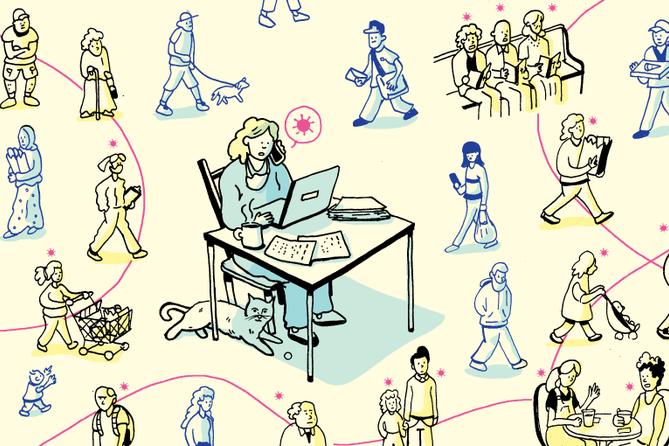Spotlight PA is an independent, nonpartisan newsroom powered by The Philadelphia Inquirer in partnership with the Pittsburgh Post-Gazette and PennLive/The Patriot-News. Sign up for our free weekly newsletter.
A lab test indicates you have COVID-19.
Every day begins with the same grim ritual. A public health nurse logs into Pennsylvania’s disease surveillance system and scrolls through the list of coronavirus cases. The computer shows 200, but that’s because it’s all the system can display at once. Each time a case is marked complete, another appears.
The repetition is punishing.
A lab test indicates you have COVID-19.
The phone call goes out; someone answers. It’s a panic-stricken family, fearing a loved one might soon die without them by their bedside. It’s a household on the verge of financial ruin because both parents lost their job, and now one is sick. It’s a mother desperate for information, but who can speak only Spanish.
The calls are heartbreaking. But the nurses press onward.
A lab test indicates you have COVID-19.
They are the state’s medical detectives, working against time to stop infectious disease outbreaks. When did your symptoms start? Where have you traveled? Can you remember every person you interacted with during the past two weeks? They trace the clues, then more calls. Days turn to weeks. Case counts surge. Patients die.
There seems to be no stopping the coronavirus.
“You’re trying to take one day at a time so you can survive it,” said one nurse, who asked to remain anonymous because state health officials declined to allow interviews with the media. “It’s also hard because the public doesn’t realize there are people doing this type of work because we’re not in the hospital taking care of your loved ones. They don’t see us.”
As the global pandemic swept across Pennsylvania’s borders, the state’s little-known force of public health nurses were thrust to the front lines. They were the centerpiece of the early response, and their work to trace and contain new cases will be essential to the plan to reopen.
Locating infected individuals and identifying their contacts allows quarantines to be applied more narrowly and future outbreaks avoided. That means more people can go about their lives and more businesses can stay open. The model has proved successful in countries like South Korea, Taiwan, and Iceland.
But in Pennsylvania, what should be a fast-running detection system has been slowed to a walk for one reason: There simply aren’t enough public health nurses.
During the past month, Spotlight PA interviewed nearly two dozen current and former public health employees and reviewed hundreds of pages of staffing documents, letters, payroll listings, budgets, and other material. The investigation revealed a depleted public health system that has repeatedly come under attack, slashed decade after decade until all that remained was a skeleton workforce.
The employees said Harrisburg has long considered public health nurses expendable. They have endured budget cuts, a drawn-out legal battle, and a slow and steady thinning of their ranks. For years, they said, they have fought to save the system, making pleas to governors and legislators of both political parties about the need for more staff to prevent infectious disease outbreaks. Yet their warnings were largely ignored. At the time, the threat seemed distant, the disease unknown.
“They always say, ‘We’ll hire nurses when we need it. We’ll get resources when we need it,’” said Joanne Namey, a retired public health nurse who spent 35 years working in Northeast Pennsylvania.
“Where has that gotten us today?”
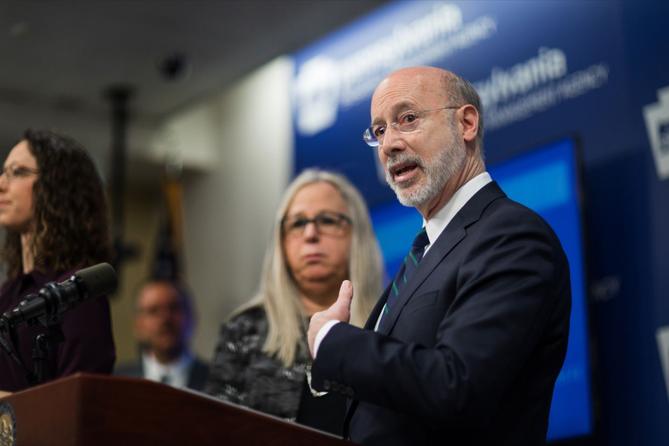
No ‘good leads’ for more tracers
Currently, Pennsylvania has no complete plan for how it will increase contact tracing to the level health experts say is needed to safely reopen the state. During a phone call with reporters Tuesday, Gov. Tom Wolf said the state hadn’t yet found a way to solve the problem.
“We don’t have a lot of good leads on that at this point,” Wolf said. “We certainly don’t have a budget.”
Later that day, Department of Health Secretary Rachel Levine told reporters that plans to bolster contact tracing were in the works based on federal funding Pennsylvania has received for COVID-19.
“We are going to come up with a very robust plan to do contact tracing, which will be a very important part of future plans,” she said.
While there have been calls for the federal government to assist in creating a new national tracing force, it has so far left action to the states. The Pennsylvania Department of Health currently employs 131 public health nurses, down from 177 nurses in 2012, which is as far back as the state’s online payroll data shows.
These nurses are responsible for overseeing 60% of the state’s population — or about one nurse for every 56,000 people — including rural areas and populous suburbs like Delaware County.
Only six counties — Allegheny, Bucks, Chester, Erie, Montgomery, and Philadelphia — have their own health departments and contact tracers, as well as four cities: Allentown, Bethlehem, Wilkes-Barre, and York. However, the state nurses can get called in to support those local health departments, too, as has been the case with Montgomery County, which has been overwhelmed by the coronavirus.
Everywhere else, it solely falls to the state’s public health nurses to guard against outbreaks.
As of Thursday, the health department said plans to bolster contact tracing were still being developed and may involve recruiting additional staff or the use of technology. Sixteen employees from the department’s epidemiology and hospital-acquired infection teams are assisting with tracing, officials said.
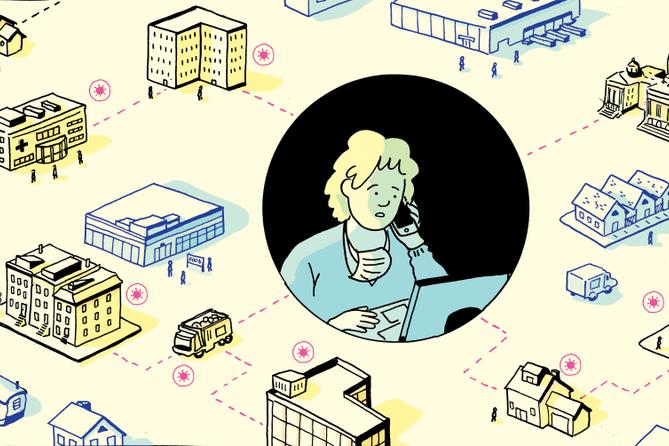
‘There’s no catching up’
In early March, before any COVID-19 cases had been confirmed in Pennsylvania, public health nurses began calling people who had returned from China and other countries where the virus had spread. The idea was to proactively find potentially infected people who could trigger a wider outbreak in the state.
But the virus quickly outflanked them. The first two positive cases were announced March 6 in Delaware and Wayne Counties, though new data suggests the virus had been spreading for some time. The next day there were two more new cases. Before long, other counties assigned to the nurses — especially Berks and Lehigh — would bubble with new infections.
In those early days, nurses hand-delivered quarantine letters and called sick individuals daily to check on their symptoms. They also made daily calls to anyone who had close contact with a sick person, explaining that they had been exposed and should quarantine, too.
Some calls became contentious because people couldn’t access testing, one public health nurse recalled.
“But most of the time they were thankful that someone cares enough to check on them,” she said.
As the number of cases grew, though, that system became untenable. By mid-March, people who had no known contact with other positive cases were becoming infected. The health department said its containment efforts helped slow “sustained community spread,” but it eventually had to adjust its strategy. It could no longer trace the spread of the virus and instead could focus only on limiting its harm.
On March 23, Wolf issued his first stay-at-home order.
The nurses shifted to mailing quarantine letters and stopped attempting to track down contacts, instead giving patients information by phone that they could pass on to anyone they knew they had contact with. The nurses also were answering a growing number of calls to the Department of Health’s hotline, and consulting with nursing homes and group homes on how to respond if someone showed symptoms.
As the number of infections increased exponentially, so did their work. Several nurses described working six or seven days a week every week, not knowing when they would have a chance to sleep or spend time with their families.
“There’s no catching up,” one nurse said. “When I leave at night, there’s still 200 calls waiting to be made. That’s been happening for two weeks.”
Health experts agree no number of public health nurses would have been able to stop the coronavirus, and none of the employees interviewed made that contention.
Across the U.S., however, depleted public health workforces are struggling to investigate cases and trace contacts as quickly as needed. A recent report from Johns Hopkins University and the Association of State and Territorial Health Officials estimated that 100,000 more contact tracers are needed across the nation in order to identify all contacts, safely isolate the sick, and quarantine those exposed.
But advocates and nurses say the public health system in Pennsylvania was stretched thin long before this outbreak.
Stationed in 55 state health centers and six district offices, public health nurses tackle everything from treating tuberculosis patients and tracking HIV cases to contacting all the patrons at a restaurant where there was a case of salmonella. The data they obtain is sent to epidemiologists in Harrisburg, who can identify concerning trends.
“Without this kind of footwork on the street, you wouldn’t get people doing what they’re supposed to be doing for public health,” said Wendy Hoke, a retired public health nurse who worked in Snyder County for 35 years. “But you don’t even realize we’re there until something happens to you.”
And that’s a problem, because it’s easy to cut what you don’t see.
Under fire from Harrisburg
The first major blow came in 1996, when former Republican Gov. Tom Ridge sought to close all of the state health centers and eliminate public health nurses in a move to privatize the system.
That’s when Brenda Carll, then a public health nurse in Venango County, first drafted a position statement with three of her colleagues opposing the closures. She drove nearly four hours to Harrisburg to explain to legislators the importance of her work.
“I always felt if they knew what we did, they wouldn’t even consider cutting it,” said Carll, who retired last summer.
Her efforts, along with those of many advocates and health-care associations, seemed to pay off when the legislature passed a law quashing Ridge’s efforts.
Yet just two years later, a study found nursing staff had been cut at more than half the state health centers. It could take overworked nurses several days to respond to foodborne outbreaks, the researchers wrote. More serious consequences could arise in the future, they warned.
“And then it may be too late to prevent epidemics,” they wrote.
It took another three years to spur change, though. And even then, it didn’t come from the state.
In the wake of 9/11 and the anthrax attacks in 2001, the federal government was eager to fund public health. Grants for emergency preparedness and bioterrorism surveillance started flowing to the states. In Pennsylvania, public health nurses joined task forces with first responders and local hospital systems to discuss how each agency would respond and communicate during a terrorist attack, natural disaster, or biochemical assault. They planned for makeshift hospitals — a provision being used now with COVID-19.
But over time, the urgency waned. And so did the money.
From 2003 to 2019, funding for state and local preparedness from the U.S. Centers for Disease Control and Prevention was cut by a third. With fairly stagnant funding at the state level, public health workers were forced to prioritize which cases got their attention. In the populous Southeast district, for example, nurses focused on tracking diseases like measles, tuberculosis, hepatitis A, and foodborne illnesses. But they sometimes had to forgo diseases like hepatitis C and and Lyme disease.
“We didn’t have anywhere near enough staff to do all the investigations that should have been done,” said Larry Sundberg, who worked as a district epidemiology manager for the Southeast district from 2005 to 2013. “My position was making the call very often in terms of which ones we follow up on and which ones we don’t.”
“You hope you don’t make a mistake there,” Sundberg said.
The health department told Spotlight PA no counties should have to forgo cases. Instead, they could be assigned to nurses in other areas of the state to investigate remotely.
In Northwestern Pennsylvania, Carll had fewer investigations, but she said she sometimes lacked the resources to do them safely. On a winter day in the late 2000s, before visiting a patient with tuberculosis at their home, Carll asked a supervisor for an N95 face mask — the same ones now in short supply.
She was told they didn’t have any. The supervisor instead recommended reducing her risk by doing the consultation on the patient’s porch.
“That’s the kind of budget we’ve had,” Carll said.
But in 2013, the state found ways to cut even further.
This time, Republican Gov. Tom Corbett planned to shutter half the state health centers and eliminate 27 public health nurse positions. Several nurses, along with their union and five Democratic lawmakers, sued the governor to halt the changes. After a year-long battle, the Pennsylvania Supreme Court sided with them.
It was an incomplete victory, said Joanne Namey, a retired public health nurse who was one of the plaintiffs in the lawsuit. Although the state kept the health centers open, they contracted out certain services and stopped refilling positions when nurses retired.
“After those blows, things will never be like they used to,” Namey said.
When she was hired in 1981, Luzerne County had a main health center with 10 nurses and two smaller satellite offices. By the time she left in 2016, she said, the satellite offices had closed and only two nurses remained.
The pattern has repeated across the state: Health centers that once had four or five nurses later had to make do with one or two, current and former employees said. Some in rural areas have been left with no nurse at all. Instead, one nurse oversees several neighboring counties.
That’s the case in Forest County, where there is a physical state health center but no public health nurse permanently stationed inside, said Judith McDaid, mayor of Tionesta Borough, the county seat, and a former public health nurse herself.
“Even though I retired from public health in 2004, I still get calls from residents when they have questions,” she said. “They know I live here, and it works for them.”
But as mayor, McDaid wishes there was a public health presence in her community.
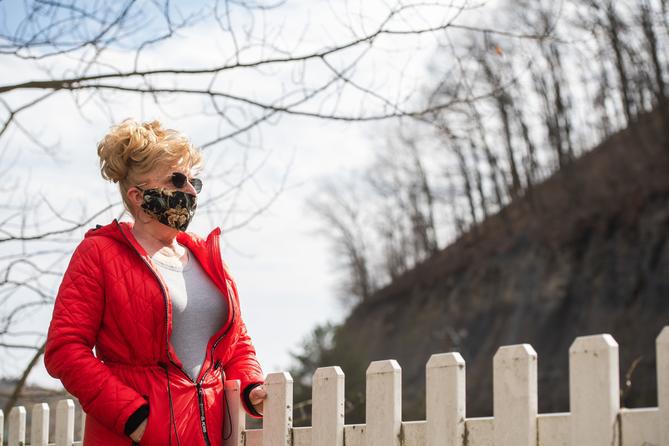
An ‘already weakened’ system
After battling to save the public health system in 1996 and 2013, Carll decided to keep the papers she had collected: position statements on the importance of public health, FAQs explaining what nurses did, national studies showing where Pennsylvania ranked in public health spending.
“I knew it wasn’t going to go away,” she said.
And sure enough, in 2017, it was time to dust off those papers again.
Faced with a large budget deficit, Wolf proposed consolidating the departments of health, human services, aging, and drug and alcohol programs — a change that would result in a $13 million cut to the state health center budget. As in previous decades, the proposed cuts were cast publicly as attempts to “modernize” public health and increase efficiency.
In its statement to Spotlight PA, the health department said those budget reductions “were not targeted at nurses, but rather to allow these valued employees to be out in the community and away from community health centers.”
“When community nurses are out in their communities providing valuable care, it increases access to care, and erases barriers to that care,” the statement said.
But to Carll, the proposal was “an assault on the already weakened public health infrastructure,” and she wrote as much in letters to legislative leaders at the time. The nurses’ union reminded the state of the 2013 lawsuit, which suggested any cuts to public health services could be reversed by the courts.
While the legislature approved the budget cut, $4 million in supplemental appropriations were added later that year. Ultimately, no state health centers were closed nor any nurses furloughed.
But while this was being sorted out, many nurses left for retirement or other jobs, Carll said, and the administration has been slow to replace them.
The health department said it has been “filling those positions consistently.” But as of Thursday, there were 31 public health nurse vacancies. Spokesperson April Hutcheson said recruitment and retention are challenging since government salaries fall below that of private sector nursing positions.
The state’s public health nurses (officially titled community health nurses) earn $57,000 to $87,000 annually, according to payroll data.
And Pennsylvania continues to underfund public health relative to other states, spending just $14.50 per capita versus the national average of $35, according to the State Health Access Data Assistance Center, a health policy research program. This figure accounts for only state spending and not additional money spent by the 10 local health departments. Still, Tennessee has a similar public health system and spends more than three times as much.
There have been some signs of improvement, however. The state earned national public health accreditation and studies have shown progress in its emergency preparedness. But nurses said the preventive work they once did to keep communities healthy has been lost.
They no longer have the time or resources to offer mobile prenatal services for low-income mothers, talk to seniors about the importance of the flu vaccine, or partner with the Salvation Army to create a dental center for patients who couldn’t afford care.
Too often, that work is undervalued because its benefits are invisible, said Walter Tsou, executive director of Physicians for Social Responsibility Philadelphia and former head of the Philadelphia and Montgomery county health departments.
“Public health is successful when nothing’s happening. When we don’t have disease outbreaks, when water is clean and air is not polluted, and food is nutritious,” he said. “But no one gives credit to the people who work behind the scenes to make that happen.”
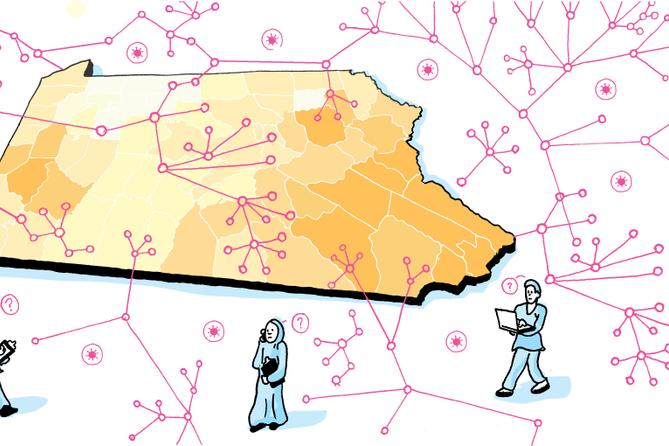
Surging public health capacity
Today, deep into the second month of confronting COVID-19, the importance of public health and Pennsylvania’s lack of investment in it have become glaringly obvious, whether it’s the dearth of public health nurses or the state’s struggle to collect and accurately report case details and patient data.
A vaccine is still months, if not years, away. So case investigations and contact tracing are one of the state’s most important defenses against further outbreaks, said Krys Johnson, an assistant professor in the Department of Epidemiology and Biostatistics at Temple University.
To do it effectively in Pennsylvania, with enough resources to allow cities and towns to resume some normal operations, the state would need at least 2,000 contact tracers, Johnson estimated. And not just for the short-term. The real need will come in the fall, if schools reopen and businesses resume physical operations.
That’s why the state should start recruiting retired nurses, public health professors, college students, and others who can work under the supervision of the public health nurses now, Johnson said. With at least seven public health colleges across the state, “it’s definitely a big asset that’s going unused,” she said.
Rep. Dan Frankel, the Democratic chair of the House Health Committee, plans to introduce a bill to hire 520 case investigators and 1,000 contact tracers to help public health nurses with this work. The measure could cost “tens of millions of dollars,” Frankel told Spotlight PA, “but there’s no denying that this is an absolute prerequisite to getting Pennsylvania’s economy opened up safely.”
Although the legislature has failed to adequately fund public health for years, Frankel said, the current crisis might muster the political will to change that.
In Massachusetts, the government has teamed up with a local nonprofit to hire 1,000 contact tracers, and earlier this week New York, New Jersey, and Connecticut announced a partnership to ramp up tracing efforts, drawing on help from medical students. San Francisco is trying to build new contact tracing teams using city librarians, university staff, and medical students, and Florida is calling on public health students for assistance.
As someone who spent years advocating for a comprehensive public health system, Carll would love to see this pandemic be a turning point. For public health nurses to be valued and their ranks to be bolstered. But she’s not ruling out another drive to Harrisburg in the future.
“Will we be better prepared next time?” she said. “Based on my 30 years, I’m not convinced.”
“We forget easily.”
100% ESSENTIAL: Spotlight PA relies on funding from foundations and readers like you who are committed to accountability journalism that gets results. If you value this reporting, please give a gift today at spotlightpa.org/donate.
